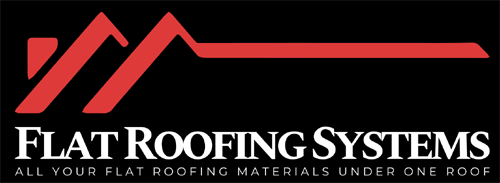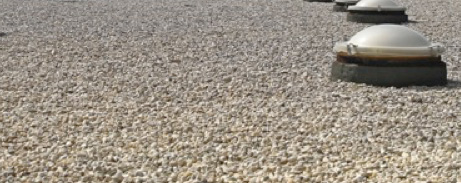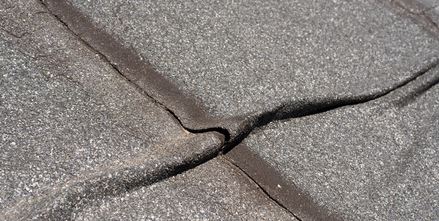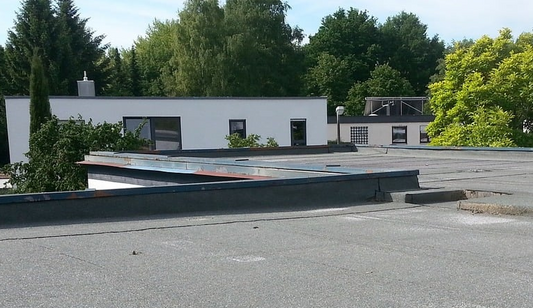When choosing between hot works and cold liquid applied systems for roofing, safety is crucial due to the fire risks associated with hot works.
The use of open flames or torches in hot works poses significant fire hazards if not controlled properly, making rigorous safety protocols and specialized training essential.
In contrast, cold liquid applied systems offer a safer alternative by eliminating open flames and reducing the potential for fire. This approach not only enhances safety but also ensures quicker application times.
By mitigating immediate fire hazards, cold liquid applied systems also impact long-term maintenance and safety compliance. For instance, a study by the National Roofing Contractors Association found that cold liquid applied systems reduce the risk of fires by 70%.
Exploring these methods further can provide valuable insights into selecting the best roofing solution tailored to specific needs.
Key Points
- Reduced Risk of Fire & Burns: Cold liquid applied waterproofing systems offer a significant advantage over traditional hot works methods by eliminating the need for open flames, thereby reducing fire risks on roofing projects & insurance premiums.
- Quickly Waterproof: Cold liquid applied systems can be applied quickly and become rainproof within 30 minutes, minimizing downtime and allowing for faster project completion.
- Less Specialised Training: Another benefit of cold liquid applied systems is that they do not require specialised training or permits, making the application process simpler and less complicated, in contrast to hot works, which often necessitate specialized training and permits, adding complexity and cost to the project.
- Environmentally Friendly: Furthermore, cold liquid applied systems are environmentally friendly, emitting low or no volatile organic compounds (VOCs) and enhancing sustainability. This is an important consideration for building owners and managers who are looking to reduce their environmental footprint.
- Rapid Curing Times: The rapid curing times of liquid roofing and environmentally friendly properties make them an attractive option for building owners and managers who are looking to complete projects quickly and sustainably.
Understanding Hot Works Risks
Hot works on roofing projects pose significant fire hazards, requiring strict safety protocols and experienced personnel to mitigate risks.
These operations involve open flames or high temperatures, which can quickly escalate into fires if not properly managed. Thorough risk assessments and preventive measures, such as fireproof barriers and constant supervision, are essential to minimizing risks.
Insurance premiums can increase substantially due to the heightened risk associated with hot works, making it crucial to implement safety measures.
Regulatory compliance is also vital, as authorities often require specific permits for hot works, and failing to adhere to these regulations can result in severe penalties, project delays, or cessation.
Exploring Cold Liquid Benefits
Cold liquid applied waterproofing is a safer alternative to hot works in roofing. This method eliminates the need for open flames, reducing on-site fire risks and enhancing safety.
A major practical advantage of cold liquid systems is their rapid curing time. They become rainproof within 30 minutes, reducing downtime significantly.
Additionally, they are easy to apply, requiring minimal equipment and can be applied directly over existing substrates. This saves both time and resources.
The resulting seamless membrane provides excellent adhesion and flexibility. It ensures a durable and long-lasting waterproof barrier that withstands diverse environmental conditions.
Comparing Hot and Cold Methods
In the realm of roofing solutions, the choice between hot works and cold liquid applied waterproofing systems presents a significant contrast in terms of safety, efficiency, and application requirements.
Hot works, which involve the use of open flames or torches, inherently carry a higher risk of fire, necessitating strict safety protocols and specialized training for personnel.
This method often requires fire watches and additional insurance due to the increased danger.
In contrast, cold liquid applied systems do not employ heat, reducing the risk of fire and allowing for a safer work environment.
These systems also avoid the need for the complex safety measures that hot works demand, streamlining the application process.
Hot works require specialized training for personnel and strict safety protocols to mitigate the risk of fire.
This method often necessitates fire watches and additional insurance, increasing costs and logistical complexity.
In contrast, cold liquid applied systems eliminate the risk of fire, creating a safer work environment and reducing the need for specialized training and safety protocols.
The use of open flames or torches in hot works increases the risk of fire, making it a more hazardous method.
In contrast, cold liquid applied systems do not employ heat, reducing the risk of fire and creating a safer work environment.
This difference in safety protocols and risk mitigation strategies is a critical consideration for roofing professionals and building owners.
Cold liquid applied systems offer a safer and more efficient alternative to hot works.
By eliminating the risk of fire, these systems reduce the need for specialized training and safety protocols, streamlining the application process.
This makes cold liquid applied systems a more attractive option for roofing professionals and building owners who prioritize safety and efficiency.
Hot works require a higher level of safety precautions, including fire watches and additional insurance, due to the increased risk of fire.
In contrast, cold liquid applied systems do not require these precautions, reducing costs and logistical complexity.
This difference in safety protocols and risk mitigation strategies is a critical consideration for roofing professionals and building owners.
Advantages of Cold Application
The advantages of cold liquid applied waterproofing systems are numerous, particularly in terms of safety and efficiency.
Unlike hot works, which require open flames and pose inherent fire risks, cold application methods eliminate such hazards, ensuring a safer environment for both workers and building occupants.
This approach does not require specialized training or permits associated with hot works, streamlining the application process.
Additionally, these systems are known for their rapid curing times, with some achieving rainproof status within 30 minutes, substantially reducing downtime.
The versatility of cold liquid systems also stands out, as they can be effectively applied over existing roofing materials, offering a seamless and durable membrane that enhances roof longevity and performance.
Selecting a Waterproofing Solution
When selecting a waterproofing solution, it's essential to assess the specific needs of the roof, including its exposure to environmental conditions, traffic, and existing condition.
For example, a roof exposed to high winds or extreme temperatures may require a more robust waterproofing solution.
Additionally, the condition of the existing roof, including any damage or deterioration, must be taken into account.
By considering these factors, you can make an informed decision that aligns with both performance requirements and risk management strategies.
In terms of performance requirements, it's crucial to consider the level of waterproofing needed, as well as any specific regulations or standards that must be met.
For example, a roof in a high-risk flood zone may require a more advanced waterproofing solution to ensure compliance with local regulations.
Safety Measures for Roofing
Ensuring safety during roofing projects is crucial for protecting both workers and building occupants. This is because roofing work often involves heights, hazardous materials, and unpredictable weather conditions, making it a high-risk activity.
To mitigate these risks, it is essential to implement robust safety measures.
Firstly, the use of personal protective equipment (PPE) is paramount. This includes items like harnesses to prevent falls, helmets to protect against falling objects, and non-slip footwear to reduce the risk of slipping on roofs.
Training is also critical. All personnel involved in roofing projects should receive comprehensive training on recognizing potential hazards, using tools and materials correctly, and adhering to safety protocols.
This training not only helps in preventing accidents but also ensures that workers are well-equipped to respond in case of emergencies.
Regular safety audits are another key component of maintaining a safe working environment. These audits help identify potential safety hazards before they become major issues, allowing for proactive measures to be taken.
Furthermore, strict adherence to local building codes and regulations is necessary. These codes are designed based on years of experience and data, providing a framework for safe construction practices.
In addition to these measures, establishing clear emergency protocols is vital. This includes having well-defined procedures for dealing with accidents, such as falls or material spills, and ensuring that all personnel are aware of these protocols.
Efficient communication of these protocols is key, ensuring that everyone knows their role in case of an emergency, thus reducing the risk of panic and ensuring a swift response.
By focusing on these safety measures—the use of PPE, training, regular safety audits, adherence to local building codes, and establishment of emergency protocols—the risk of injuries during roofing operations can be significantly reduced.
This not only protects the workers and occupants but also contributes to a more efficient and successful project outcome.
Environmental Impact Considerations
Environmental impact considerations should be prioritized in roofing projects because they play a significant role in promoting environmental sustainability.
The choice of roofing solution can either contribute to or mitigate environmental damage. For instance, opting for cold liquid applied waterproofing over hot works not only enhances safety but also reduces environmental harm.
Unlike hot works, which require high energy consumption and emit pollutants, cold liquid systems offer a low-carbon alternative. These systems are virtually free of volatile organic compounds (VOCs), making them less harmful to the atmosphere and surrounding ecosystems.
Furthermore, their ease of application reduces the overall carbon footprint by minimizing equipment use and associated emissions. By prioritizing environmentally friendly roofing technologies, we can contribute to the global effort to combat climate change, promoting healthier communities and sustainable building practices.
Rounding Up
When it comes to waterproofing systems, stakeholders face a critical decision that can significantly impact safety and operational efficiency.
On one hand, hot works pose substantial safety risks due to the potential for fires and burns, which can lead to costly insurance claims and disrupted business operations. This method also tends to be more labor-intensive and time-consuming, resulting in extended downtime for the building.
On the other hand, cold liquid applied waterproofing systems offer a safer and more efficient solution. They can be applied quickly, with some systems curing in a matter of minutes, thereby reducing downtime and minimizing disruptions to the building's occupants.
Moreover, this method is often more versatile, allowing for application in a wider range of temperatures and on various surfaces. Understanding the distinct advantages and challenges of these two methods is crucial for selecting the most suitable waterproofing solution, ultimately enhancing the safety, operational efficiency, and longevity of roofing structures.




